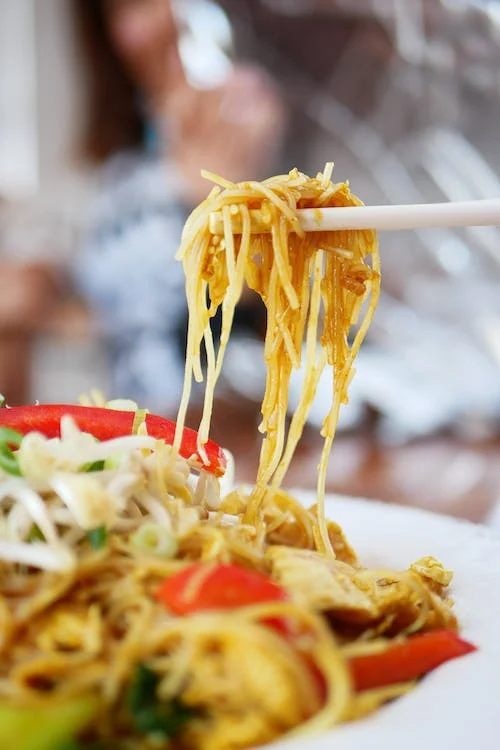Patience is a virtue in cooking, as it is in life. There are some things you simply cannot rush. Making delicious Chinese food, for example, a stew takes time. You’ll have to braise the beef, cook the vegetables, and do all the other prep work. Patience in the kitchen indicates that you are taking your time and thinking about what you are doing. You’re letting the meal finish cooking, allowing the tomatoes to caramelize and the spices to open, and tasting and adjusting the seasoning as you go. Most of these changes just take a minute or two, but they can drastically alter a dish’s final flavor.
Chinese Cooking’s “Five Elements” Theory
Chinese people believe that humans are surrounded by five different types of “chi” or energy fields. These are also known as the “five elements,” and they play a significant part in Chinese culture, especially in eating habits. According to this notion, changing or moving these five elements can have a significant impact on a person’s destiny. If the concept of yin and yang lies at the heart of Chinese civilization, the “five elements” hypothesis should be considered its cornerstone.
What Is The Yin And Yang Concept?
The two principles of Yin Yang, one negative, dark, and feminine (yin) and the other positive, brilliant, and masculine (yang), combine to impact the fates of beings and things.
What are the Five Elements of Chinese Cuisine?
People use the symbols of Wood, Fire, Earth, Metal, and Water to explain how everything in the universe and nature came to be and how it changed over time, according to the Five Elements theory. The five elements are all about finding the right balance between each part, just like yin and yang.
The Chinese believe that there are two main relationships between each of the five elements. These are called “mutual generation” and “mutual overcoming.” These connections are based on how these things work together in nature. Because a tree will grow when given water, mutual generating may be ‘Water helps Wood grow.’ Mutual overcoming, on the other hand, would be something like “Water can halt Fire” or “Metal can cut Wood.” As a result, mutual generating produces growth, whereas mutual overcoming produces destructive energy.
What Is The Relationship Between The Elements And Cooking?
In line with the idea of balance, Chinese doctors think that you can get sick if you have too much or too little of any part of your life.
So, each element is like one of our main organs: the heart is fire, the lungs are metal, the liver is wood, the kidneys are water, and the spleen is earth (earth). Each element has several other body parts that are connected to it, but the organ mentioned will be the most important one. Each element also has a color that goes with it. Fire is red, wood is green, the earth is yellow, metal is white, and water is black. People think that if you feel sick in a certain part of your body, eating the color food that goes with that part will help you feel better. For example, if you have heart pain, you should eat something red, like red pepper, apples, or tomatoes.
What are the various forms of food in the Chinese Cuisine?
In Chinese medicine and cuisine, it is thought that specific colors and ingredients of food can help you feel better and enhance your health if you are weak or ill in certain sections of your body or organs. For instance, if your kidneys aren’t working well, you should eat more black or water-colored foods like wood ear, seaweed, and black sesame.
The Five Elements of Chinese Cuisine
White Food is also known as Food for the Lung
People say that eating white foods is good for your skin, lungs, large intestine, nose, and respiratory system. Rice and noodles are two common white foods. Both are staples in Chinese cooking. On the list are also lotus seed, daikon, onion, garlic, bitter melon, winter melon, broccoli, bamboo shoots, white wood ear, milk, tofu, soy milk, Asian pear, banana, almond, white sesame, rock sugar, and more.
Black or Water Food
Kidneys, bones, ears, and reproductive organs are said to benefit from black and blue meals. Although there aren’t as many black or dark blue meals, the list still features some excellent choices. Wood ear, seaweed, shiitake mushrooms, eggplant, black beans, raisins, blueberry, black grapes, black sesame, black vinegar, tea, sweet bean sauce, and more are among the items to look for.
Yellow Food
Yellow foods, according to this notion, are beneficial to the digestive system and spleen. Yellow is another prevalent food color Corn either sweet or baby, taro, oats, pumpkin, butternut squash, yellow pepper, soybeans, egg yolk, bean curd, ginger, orange, star fruit, lemon, pineapple, papaya, nut, walnuts, honey, and other foods are among the foods you can eat.
Green Food
Green-colored foods are beneficial to your liver, gallbladder, eyes, muscles, and joints. The list of green foods is seemingly limitless. Mung beans, Chinese leeks, wasabi, and all green vegetables and fruits are common elements in Chinese cuisine.
Red Food Also Known As Food For The Heart
People in China think that eating red foods is excellent for your heart, small intestine, and brain. Carrots, tomato, sweet potato, strawberry, chile, red beans, red pepper, jujube, goji berry, dragon fruit, apple, brown sugar, and anything else that is red come into this group.
Is The Five Elements Of The Chinese Cuisine A Medication Diet?
Please keep in mind that having a well-balanced diet is critical. The purpose of this post is to expose you to the five components theory as it relates to Chinese cuisine, and how Asian dishes affect the body and mind. It’s not meant to be a magical cure-all for whatever ails you. If you have any health concerns, you should speak with your doctor or a nutritionist before starting any new diet.
